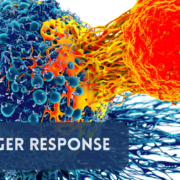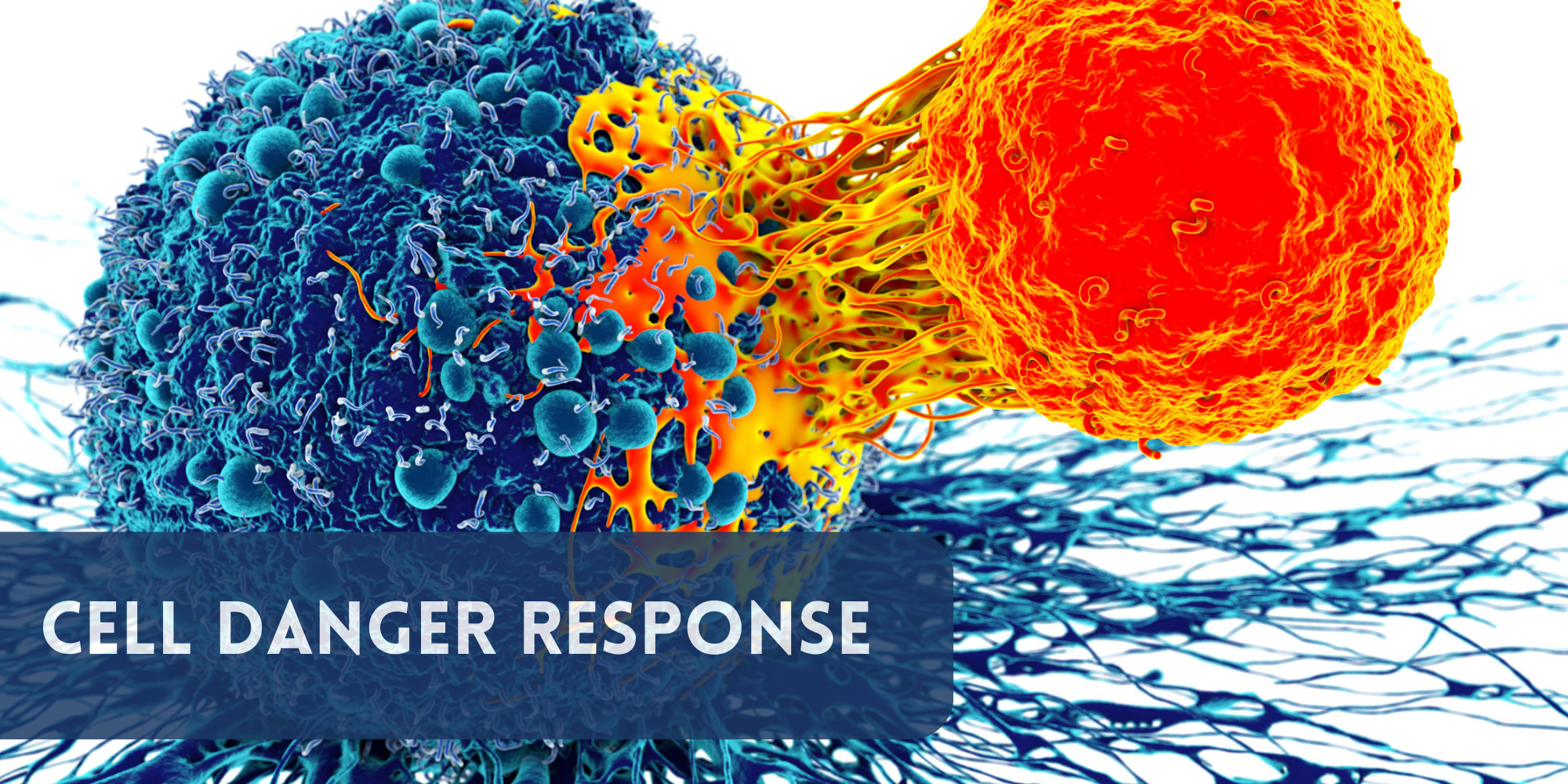Cell danger response, allodynia, and central sensitivity pain syndrome explained.
Fibromyalgia is a complex, chronic pain condition, characterized by widespread musculoskeletal pain, fatigue, sleep disturbances, and cognitive difficulties. While the exact cause of fibromyalgia is not fully understood, research has suggested that factors such as genetics, neurobiological changes, hormone deficiencies, trauma, and alterations in pain processing pathways may contribute to the development of fibromyalgia.
The exact cause of fibromyalgia pain is not fully understood, but it is believed to involve a complex interplay of factors, including biological, psychological, and environmental influences. Fibromyalgia is a chronic pain condition characterized by widespread musculoskeletal pain, fatigue, sleep disturbances, and cognitive difficulties.
Some of the factors that may contribute to fibromyalgia pain include:
- Central Sensitization: One of the key mechanisms in fibromyalgia is central sensitization, which involves an amplification of pain signals in the central nervous system. This heightened sensitivity to pain can result in an exaggerated response to stimuli that are normally not painful.
- Neurotransmitter Imbalance: Changes in neurotransmitters such as serotonin and norepinephrine, which play a role in pain modulation and mood regulation, may contribute to the pain experienced in fibromyalgia.
- Genetics: There is evidence to suggest that genetic factors may predispose some individuals to fibromyalgia. Certain genetic variations may influence pain processing pathways and increase the risk of developing the condition.
- Abnormalities in Pain Processing: Individuals with fibromyalgia may have alterations in how their brains perceive and process pain signals. This can lead to an increased sensitivity to pain and a decreased pain threshold.
- Sleep Disturbances: Disrupted sleep patterns, such as poor sleep quality or sleep disorders, are common in fibromyalgia and can exacerbate pain symptoms. Lack of restorative sleep may contribute to increased pain perception.
- Stress and Trauma: Psychological factors, such as stress, anxiety, and trauma, can play a role in the onset and exacerbation of fibromyalgia pain. Emotional distress and chronic stress may impact pain perception and the body’s ability to cope with pain.
- Inflammation: While inflammation is not a primary cause of fibromyalgia, some studies suggest that low-level inflammation in the body may contribute to the symptoms experienced by individuals with fibromyalgia.
It’s important to note that fibromyalgia is a complex and multifaceted condition, and the causes of pain can vary from person to person.
However, past and ongoing research is slowly starting to uncover some common causes of chronic fibro pain.
Some researchers and healthcare professionals have proposed that the Cell Danger Response may play a role in fibromyalgia and other chronic conditions. The theory suggests that persistent activation of the CDR in response to various stressors (such as infections, trauma, or environmental toxins) could lead to dysregulation of cellular functions, immune responses, and neurotransmitter (brain hormones) systems, contributing to the symptoms experienced in conditions like fibromyalgia.
The Cell Danger Response (CDR) is a protective and adaptive mechanism that the body activates in response to various stressors, threats, or perceived dangers (real or imagined).
The CDR involves a coordinated set of bodily processes aimed at protecting cells and tissues from harm and promoting survival. Survival at all costs. This response includes changes in cellular metabolism (reducing cellular energy), immune function (initiates immune response), and stress hormones.
The concept of the Cell Danger Response was proposed by Dr. Robert Naviaux, a renowned researcher in the field of mitochondrial biology and cellular stress responses. According to Dr. Naviaux’s theory, the CDR is a fundamental and evolutionarily conserved response that occurs in cells when they perceive a threat (real or imagined) to their survival or integrity.

This theory helps explain common triggers associated with stress (a common cause of fibromyalgia). Past surgeries, traumatic life events, mental stress, illness, physical stress, accidents, etc. can all cause a Cell Danger Response.
It’s important to note that the relationship between the Cell Danger Response and fibromyalgia is still a topic of ongoing research and debate in the scientific community.
Further studies are needed to fully understand the mechanisms underlying fibromyalgia and the potential role of the Cell Danger Response in this condition.
However, there is a growing discussion about how CDR and central pain sensitivity syndrome (CSPS) are connected. And how CDR can cause someone to be “stuck” in “survival” mode.
Central Sensitization Pain Syndrome (CSPS) is a condition characterized by an abnormal increase in sensitivity to pain due to changes in the central nervous system. Central sensitization refers to the amplification of pain signals in the brain and spinal cord, leading to heightened pain perception and response to stimuli. This condition can result in widespread pain, hypersensitivity, and other symptoms commonly seen in chronic pain disorders.
Those with fibromyalgia have CSPS.
As noted above, the Cell Danger Response (CDR) theory focuses on the biological response of cells to stressors and perceived threats.
The CDR involves a complex set of cellular and molecular processes aimed at protecting cells and promoting survival in the face of danger.
But what if the CDR never turns off? The theory suggests that persistent activation of the CDR can lead to dysfunction of cellular functions, immune responses, and other physiological processes.
While there is ongoing research exploring the potential connections between the Cell Danger Response and various chronic conditions, including fibromyalgia and other pain disorders, the specific relationship between the CDR and Central Sensitization Pain Syndrome is not well-established. Both central sensitization and the Cell Danger Response involve complex interactions within the body’s systems, but further research is needed to determine the extent to which they may be interconnected.
It is important to note that chronic pain conditions like Central Sensitization Pain Syndrome are multifaceted and can involve a combination of genetic, environmental, and neurological factors. Treatment for central sensitization typically involves a multidisciplinary approach that may include medications, physical therapy, cognitive-behavioral therapy, and other interventions aimed at addressing the underlying mechanisms contributing to pain sensitivity.
There are several nutrients and habits that may help raise your pain threshold and improve pain tolerance.
Here are some suggestions:
- Omega-3 fatty acids: Foods rich in omega-3 fatty acids, such as fatty fish (salmon, mackerel, sardines), flaxseeds, and walnuts, have anti-inflammatory properties that can help reduce pain and inflammation.
- Vitamin D: Adequate levels of vitamin D have been linked to improved pain tolerance. You can get vitamin D from sunlight exposure, fortified foods, and supplements.
- Magnesium: Magnesium plays a role in muscle relaxation and pain management. Foods high in magnesium include nuts, seeds, leafy green vegetables, and whole grains.
- Turmeric: Curcumin, the active compound in turmeric, has anti-inflammatory and analgesic properties that can help reduce pain and improve pain tolerance.
- Regular exercise: Regular physical activity can help increase pain tolerance by releasing endorphins, which are natural painkillers produced by the body.
- Stress management techniques: Practices like meditation, deep breathing, and yoga can help reduce stress and improve pain tolerance.
- Adequate sleep: Getting enough restful sleep is important for pain management and can help improve pain tolerance.
- Deep restorative sleep plays a crucial role in raising pain tolerance and managing pain effectively. During deep sleep stages, the body undergoes important processes that aid in physical and mental restoration, including tissue repair, muscle growth, and hormone regulation.
Here are some ways in which deep restorative sleep can help raise pain tolerance:
- Pain Perception: Studies have shown that lack of sleep can increase sensitivity to pain, while adequate deep sleep can help lower pain perception.
- Endorphin Release: Deep sleep promotes the release of endorphins, which are natural painkillers produced by the body. These endorphins can help reduce the experience of pain and increase pain tolerance.
- Inflammation Reduction: Deep sleep is essential for reducing inflammation in the body. Chronic inflammation can contribute to pain sensitivity, so adequate restorative sleep can help manage pain by reducing inflammation levels.
- Muscle Recovery: Deep sleep is crucial for muscle recovery and repair. Adequate rest allows the body to heal from physical strain and can help reduce muscle soreness and pain.
- Mood Regulation: Deep sleep plays a role in regulating mood and emotional well-being. Better mental health can positively impact pain tolerance and perception.
Allodynia is a specific type of pain sensitivity where a normally non-painful stimulus, such as light touch or pressure, is perceived as painful. In individuals with allodynia, the nerves in the skin and other tissues become hypersensitive, leading to pain in response to stimuli that are not typically painful. Allodynia can be a symptom of various conditions, including neuropathic pain disorders, migraines, and fibromyalgia.
The relationship between allodynia and Central Sensitization Pain Syndrome lies in the underlying mechanisms of altered pain processing in the central nervous system. Both conditions involve an abnormal response to pain stimuli, with central sensitization playing a key role in the development and maintenance of pain hypersensitivity.
It is important to note that while allodynia can be a component of Central Sensitization Pain Syndrome, not all individuals with central sensitization will experience allodynia. Central sensitization may manifest as various types of pain sensitivity and symptoms, including hyperalgesia (increased sensitivity to painful stimuli), referred pain, and widespread pain.
The key for reducing or eliminating chronic fibro pain is a combination of turning off the CDR, balancing neurotransmitters (brain hormones), raising your pain threshold, and correcting nutritional and or hormonal deficiencies that trigger CDR, CSPS, and allodynia.







Leave a Reply
Want to join the discussion?Feel free to contribute!